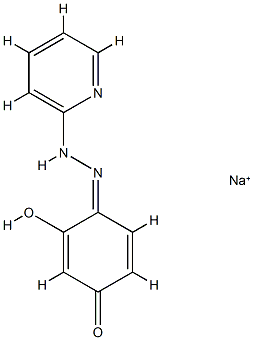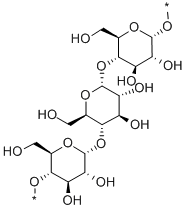LIPOPOLYSACCHARIDES FROM ESCHERICHIA COLI O55:B5
Synonym(s):LPS
- Molecular Weight: 0
- Update Date: 2023-04-23 13:52:06
What is LIPOPOLYSACCHARIDES FROM ESCHERICHIA COLI O55:B5?
The Uses of LIPOPOLYSACCHARIDES FROM ESCHERICHIA COLI O55:B5
Lipopolysaccharide from Escherichia coli O55:B5 has been used:
- to stimulate hepatocytes and non-parenchymal cells
- to stimulate the spleen and study the expression of the Malitaf gene in the fish blunt snout bream
- as part of the concanavalin A (ConA) and D-galactosamine/lipopolysaccharide (D-GalN/LPS) model of fulminant hepatitis to study the effect of the natural compound hesperetin
The Uses of LIPOPOLYSACCHARIDES FROM ESCHERICHIA COLI O55:B5
Lipopolysaccharides (LPSs) are characteristic components of the cell wall of Gram-negative bacteria. LPS and its lipid A moiety stimulate cells of the innate immune system by the Toll-like receptor 4 (TLR4), a member of the Toll-like receptor protein family, which recognizes common pathogen-associated molecular-patterns (PAMPs).
The Uses of LIPOPOLYSACCHARIDES FROM ESCHERICHIA COLI O55:B5
FITC-Lipopolysaccharides (FITC-LPS) may be used to study the movement/transport of LPS across tissue barriers such as the colonic epithelium and cellular binding and internalization of lipopolysaccharides with fluorescence-based assay systems. FITC-LPS may be used to evaluate, qualify and quantify lipopolysaccharides (LPS) removal reagents and procedures. FITC-LPS conjugate may be used for the detection of LPA binding proteins and motifs.
General Description
Lipopolysaccharides (LPSs) consist of a lipid A moiety linked to an antigenic O-polysaccharide.
Biochem/physiol Actions
Lipopolysaccharides (LPS) are localized in the outer layer of the membrane and are, in noncapsulated strains, exposed on the cell surface. They contribute to the integrity of the outer membrane, and protect the cell against the action of bile salts and lipophilic antibiotics.
Properties of LIPOPOLYSACCHARIDES FROM ESCHERICHIA COLI O55:B5
| storage temp. | 2-8°C |
| form | lyophilized powder |
Safety information for LIPOPOLYSACCHARIDES FROM ESCHERICHIA COLI O55:B5
| Signal word | Danger |
| Pictogram(s) |
 Skull and Crossbones Acute Toxicity GHS06 |
| GHS Hazard Statements |
H300:Acute toxicity,oral |
Computed Descriptors for LIPOPOLYSACCHARIDES FROM ESCHERICHIA COLI O55:B5
New Products
(S)-3-Aminobutanenitrile hydrochloride 4-Methylphenylacetic acid N-Boc-D-alaninol N-BOC-D/L-ALANINOL Tert-butyl bis(2-chloroethyl)carbamate 3-Morpholino-1-(4-nitrophenyl)-5,6-dihydropyridin- 2(1H)-one Furan-2,5-Dicarboxylic Acid Tropic acid 1-Bromo-3,5-Di-Tert-Butylbenzene S-2-CHLORO PROPIONIC ACID ETHYL ISOCYANOACETATE 2-Bromo-1,3-Bis(Dimethylamino)Trimethinium Hexafluorophosphate 4-IODO BENZOIC ACID 3-NITRO-2-METHYL ANILINE 1-(2,4-DICHLOROPHENYL) ETHANAMINE (2-Hydroxyphenyl)acetonitrile 4-Bromopyrazole 2-(Cyanocyclohexyl)acetic acid 4-methoxy-3,5-dinitropyridine 1-(4-(aminomethyl)benzyl)urea hydrochloride 2-aminopropyl benzoate hydrochloride diethyl 2-(2-((tertbutoxycarbonyl)amino) ethyl)malonate tert-butyl 4- (ureidomethyl)benzylcarbamate Ethyl-2-chloro((4-methoxyphenyl)hydrazono)acetateRelated products of tetrahydrofuran
You may like
-
 Lipopolysaccharides from Escherichia coli O55:B5 CASView Details
Lipopolysaccharides from Escherichia coli O55:B5 CASView Details -
 Lipopolysaccharides from Escherichia coli O55:B5 CASView Details
Lipopolysaccharides from Escherichia coli O55:B5 CASView Details -
 Lipopolysaccharides from Escherichia coli O55:B5 CASView Details
Lipopolysaccharides from Escherichia coli O55:B5 CASView Details -
 Lipopolysaccharides from Escherichia coli O55:B5 CASView Details
Lipopolysaccharides from Escherichia coli O55:B5 CASView Details -
 Lipopolysaccharides from Escherichia coli O55:B5 CASView Details
Lipopolysaccharides from Escherichia coli O55:B5 CASView Details -
 Lipopolysaccharides from Escherichia coli O55:B5 CASView Details
Lipopolysaccharides from Escherichia coli O55:B5 CASView Details -
 Lipopolysaccharides from Escherichia coli O55:B5 CASView Details
Lipopolysaccharides from Escherichia coli O55:B5 CASView Details -
 118753-70-1 98+View Details
118753-70-1 98+View Details
118753-70-1

